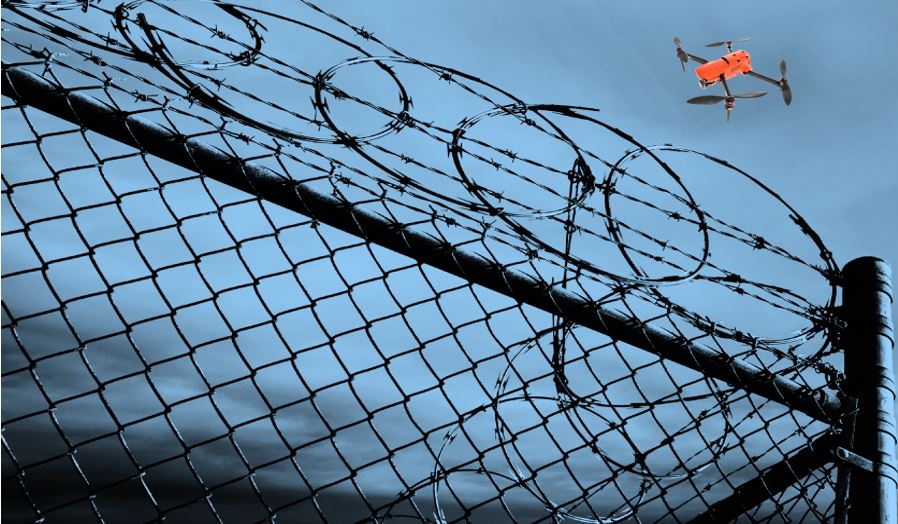

The start of 2023 has seen drone incidents at prisons happening everywhere, which brings to mind the title of the current movie “Everything Everywhere All at Once.” Considering its 11 Oscar nominations, perhaps there is potential for a new movie next year, with drone incidents affecting everything, everywhere, all at once.
Just in the last week of January alone, as shown in our Drone Attack & Incident Tracker, there were multiple prison drone incidents, reflected in these news headlines:

Contraband smuggling into correctional facilities has always been a problem, brought in by visitors or corrupt prison officials. While laws and regulations are clear about what’s allowed in prisons, the increasing availability of low cost, easy-to-fly commercial drones has opened a whole new type of contraband smuggling activity in the sector.
In recent years, drones have been persistently employed for smuggling illegal items into prisons, heightening the danger and risk in the facilities.
“The contraband drop-offs by drone have become a nightly battle at state prisons and continue to fuel an illegal, high-demand trade among inmates, supplying them with drugs, tobacco, knives and some with cellphones, which the state prisons chief said is a top threat to public safety, allowing some to arrange drug-trafficking operations and even plot murder.” (The Post and Courier, Columbia, Feb. 5, 2023)
Security agencies around the world are looking for effective counter-drone strategies and solutions that can minimize the risk from drone delivered contraband. While flying drones above and around prisons is usually illegal, this hasn’t stopped criminals from trying. Lack of budget or personnel to prevent these incidents further exacerbates the problem.
In Spain, drone incidents in prisons multiplied in the past year, leading the Interior Ministry to advance implementing effective counter-drone solutions to detect and mitigate drones. The Ceuta prison measured an average 30 to 40 drone flyovers per day.
“In many cases, drone entry inside walls is dangerous. For instance, one crashed into the officials’ parking lot; another one injured an official and caused bleeding from the propellers, which are barely visible and move at high speed… In general, the drones carry packages with hashish and medication, but they could also possibly carry weapons, making this method much more dangerous,” warns a prison official from Ceuta, in a conversation with THE OBJECTIVE.” (The Objective, Spain, Dec. 28, 2022)
Many counter-drone solutions in the market offer to provide a safer airspace environment around prisons. While lack of budgets may hinder the quick adoption of such systems, many governments have come to understand that ignoring the threat is not an option. In the state of Wyoming, a new bill to prohibit drones over prisons has been approved by the Senate, even though there haven’t yet been many incidents in the state. As the Wyoming Department of Corrections Director Daniel Shannon stated, “it’s just a matter of time. Throughout our nation, institutions are having more and more episodes.”
While some institutions have experimented with traditional counter-drone solutions, it is apparent that such an approach may bring other hazards. For example, a jammer may interfere with a prison’s communications system, with security implications. A kinetic solution could cause collateral damage to prison assets, inmates, or staff..
Ultimately, prisons must adopt a solution to detect and alert the presence of a drone; locate and track the drone, the pilot/remote controller, and the take-off position; identify whether it is an authorized or unauthorized drone (as an increased number of institutions utilize drones today to monitor prison grounds and inmates); and then ultimately mitigate the rogue drone, as allowed by local regulations and carried out by authorized staff..
D-Fend Solutions sees prison security as an increasingly common and critical use case for EnforceAir.